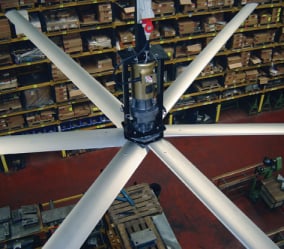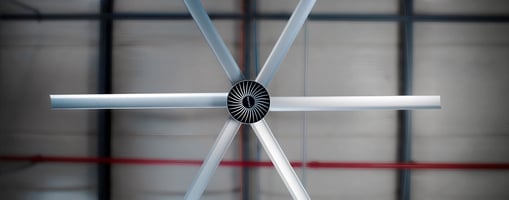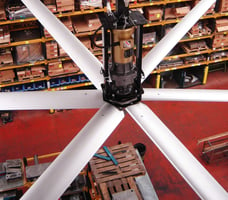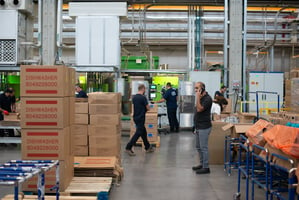Constant movement and running machinery with lots of people are common scenes in warehouses. With...
How to Improve Air Quality for Warehouse Workers
The quality of air in a warehouse is a key determinant of the level of productivity and efficiency that is achieved. Employees take in oxygen and release carbon dioxide into the air. Machinery fumes add heat and odor to the mix of air and all this deteriorates the quality of air in your premises. Poor air quality affects employee comfort, productivity, and health, and may cause damage to the goods stored. This could result in increased health care costs, low productivity, and high staff turnover, as well as profit losses from damaged goods.
It is imperative that a warehouse is well ventilated and air circulation is unhindered. Traditional construction design uses air conditioning units that are connected to extensive ductwork to regulate temperatures and circulate air. Constructing these systems requires a sizable investment at the outset and then again afterward in maintenance.
High volume, low speed (HVLS) fans have been proven to be a viable alternative to traditional designs.

Air Blending
HVLS fans move large volumes of air due to the long span of their airfoil-shaped blades. This results in a better mix of air, drawing fresh air from outside and mixing it with the stale air in the warehouse to create a perfect environment. These fans are effective for large spaces such as warehouses, and they can be combined with air conditioning units as a substitute for ineffective air ducts.
HVLS fans are designed to draw air from all directions and subsequently disperse it across a large area efficiently. This is done by the use of large blades that are designed to work without reliance on air ducts or other access points. Inlets such as windows and doors act as low-cost access points for fresh air. Running the fans consistently guarantees a fresh supply of air and the fans also work to force stale air out of the building.
Temperature and Moisture Regulation
Air temperature is one of the factors that determine air quality. Hot air can be very stifling and irritating. Cold air can risk health risks since colds and flu become worse in cold conditions. During summer, HVLS fans continuously mix warm and cold air to create a perfect environment. During winters, the fans are run in reverse to mix the warm air that rises to the ceiling with the cold air below to warm the premises. Maintaining consistent air temperatures also results in optimal air moisture and humidity.
Unlike ordinary fans, HVLS fans are very economical due to the large scale at which they operate. The fans use efficient, low horsepower electric motors, have fewer incidents of breakdown, and have very long lifespans.
Low Air Speeds
Air quality can be judged by its suitability for the type of work carried out in an area. HVLS fans run at low speeds achieving much better results than traditional fans. The low air speeds ensure that work runs seamlessly and important commodities are not destroyed or lost. The low speeds also produce lower levels of noise.
HVLS fans are the ideal choice for any warehouse operation that seeks to create a pleasant work environment efficiently. MacroAir meets the aeration needs of any warehouse through innovative solutions that offer great value for your money.


